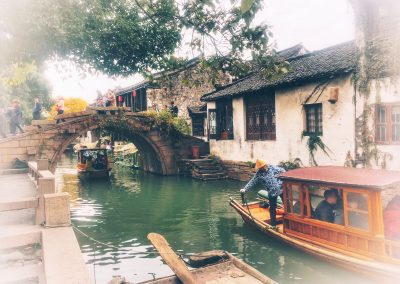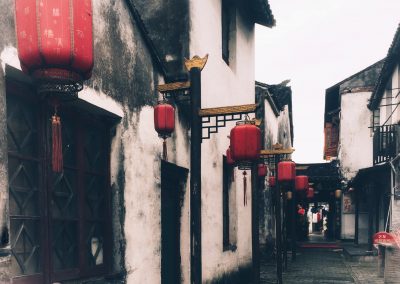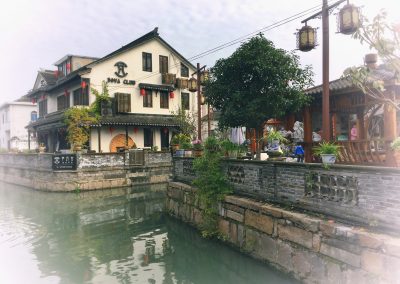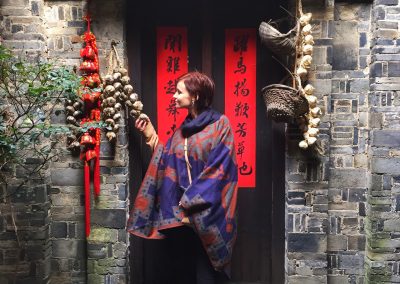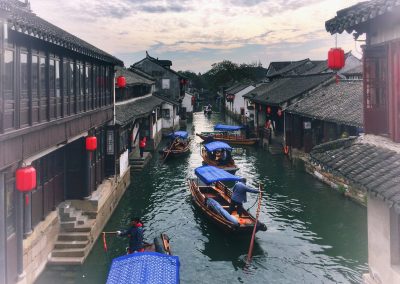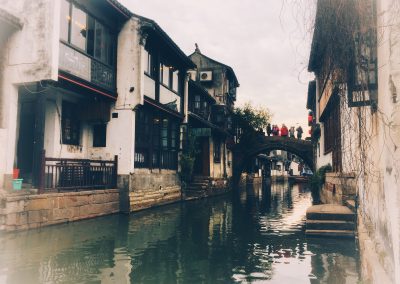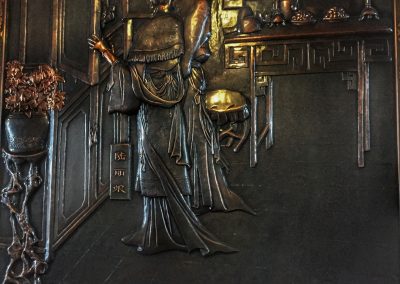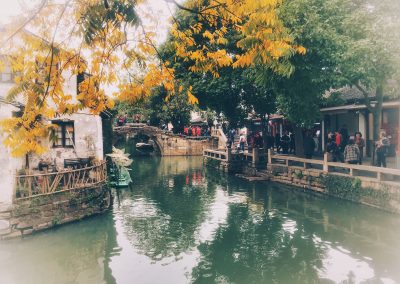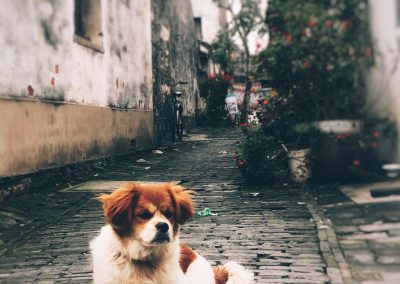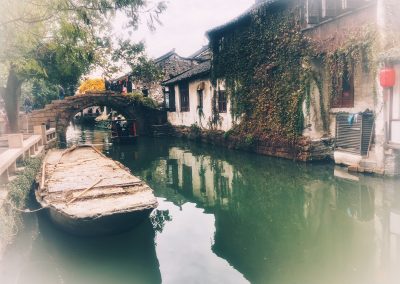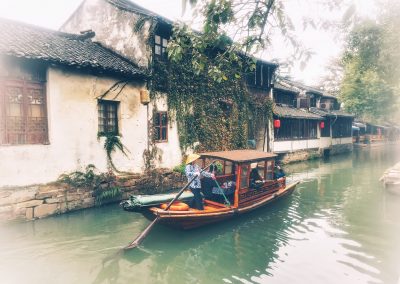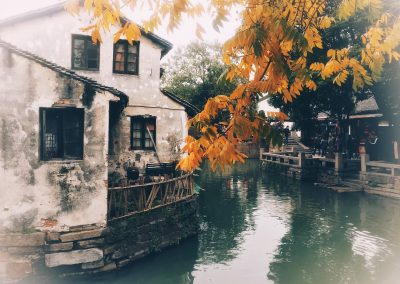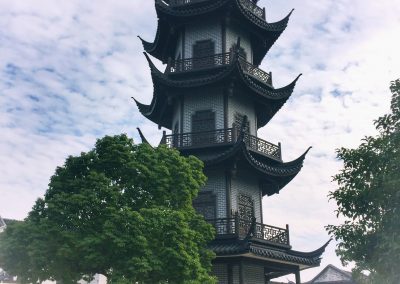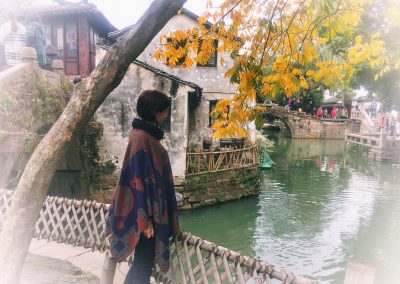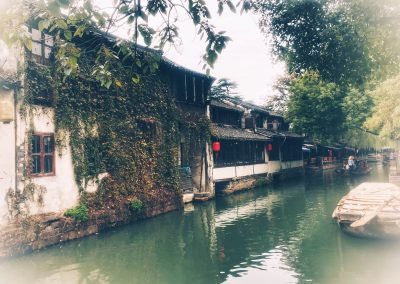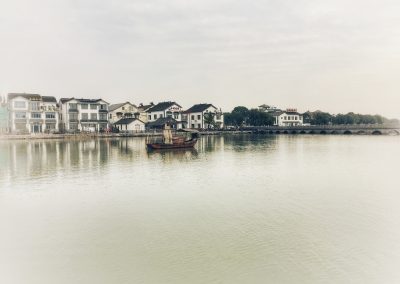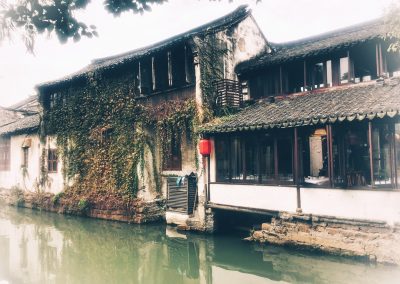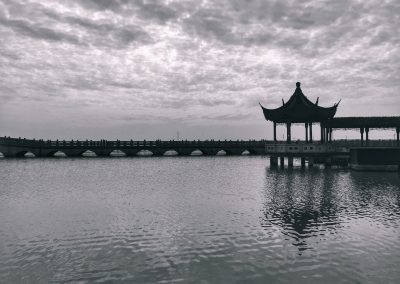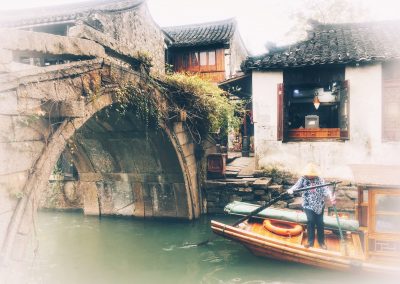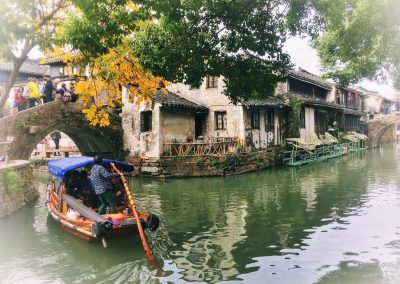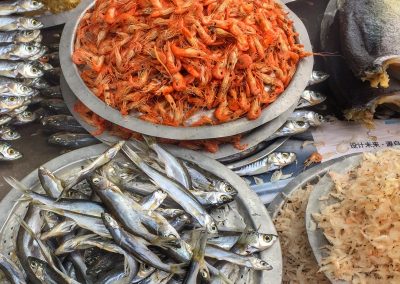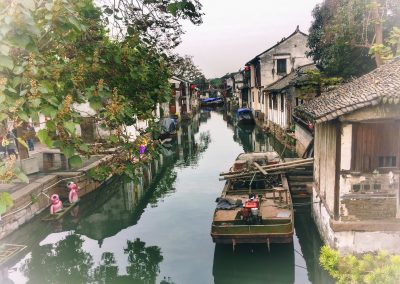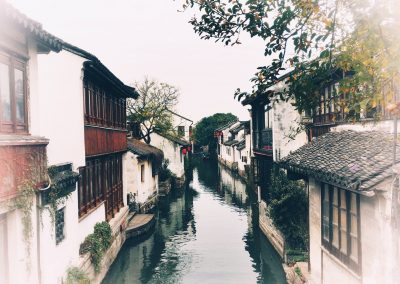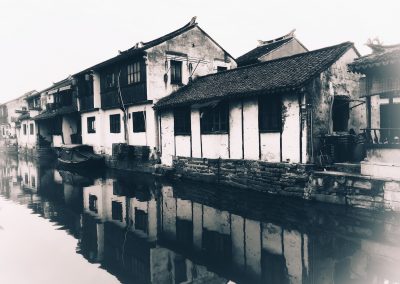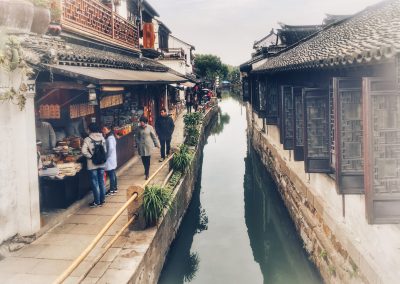Zhouzhuang – Chinese Venice

LAYOVER

CHINESE

TRADITIONAL
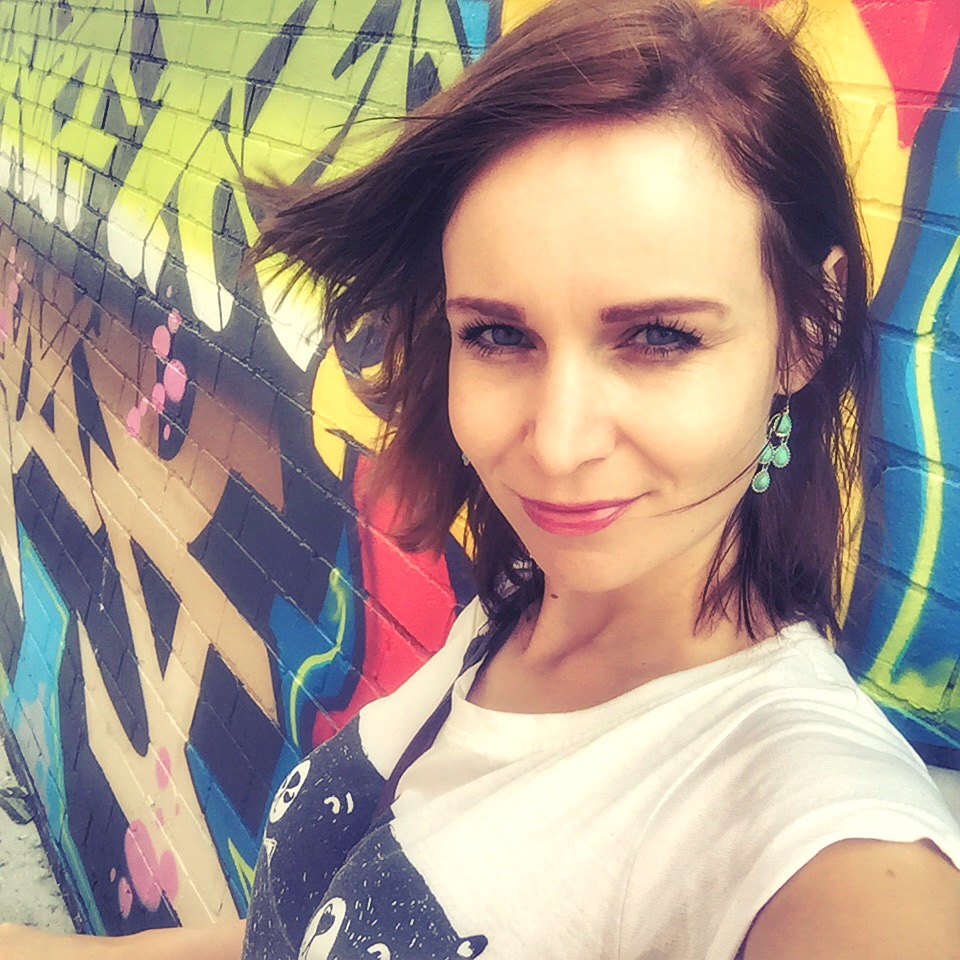
Zuzka Greizinger
STEWARDESS
FOLLOW ME
How do you picture country of China? Overpopulated, dirty, smelly and full of fake bags and electronics? Then you have no idea what surprises this huge country is hiding from us. Just a short drive from modern Shanghai (about 1.5 hours by bus) there is a traditional Chinese village (UNESCO World Heritage Site) called by its visitors no else than Chinese Venice…
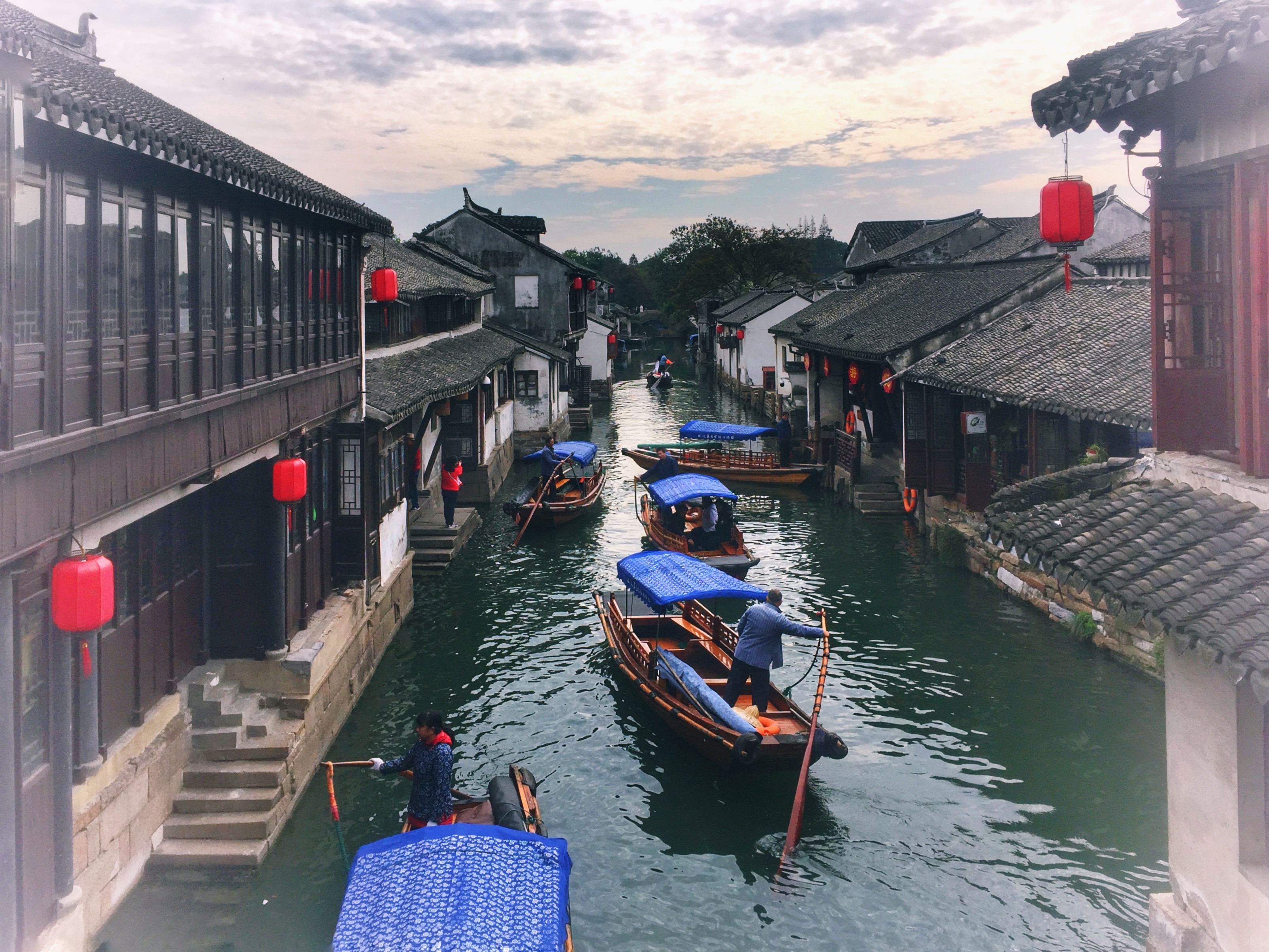
It’s seven o’clock in the morning. In the hotel lobby in Shanghai I am waiting for my Egyptian colleague Salma. Instead of sightseeing around the city, we decided to get up early and leave Shanghai for the Venice of the East. A village that lays on canals, like Venice in Italy, is the pride of China and a favorite destination of Chinese speaking tourists, but it’s still a very little-known destination for the Western world. The village came to the attention of the wider world after the Chinese artist Chen Yifei exhibited his paintings of his homeland in a gallery in New York. People started asking about the name and location of the picturesque place that the painter used to like to paint. And so the world learned about Zhouzhuang…
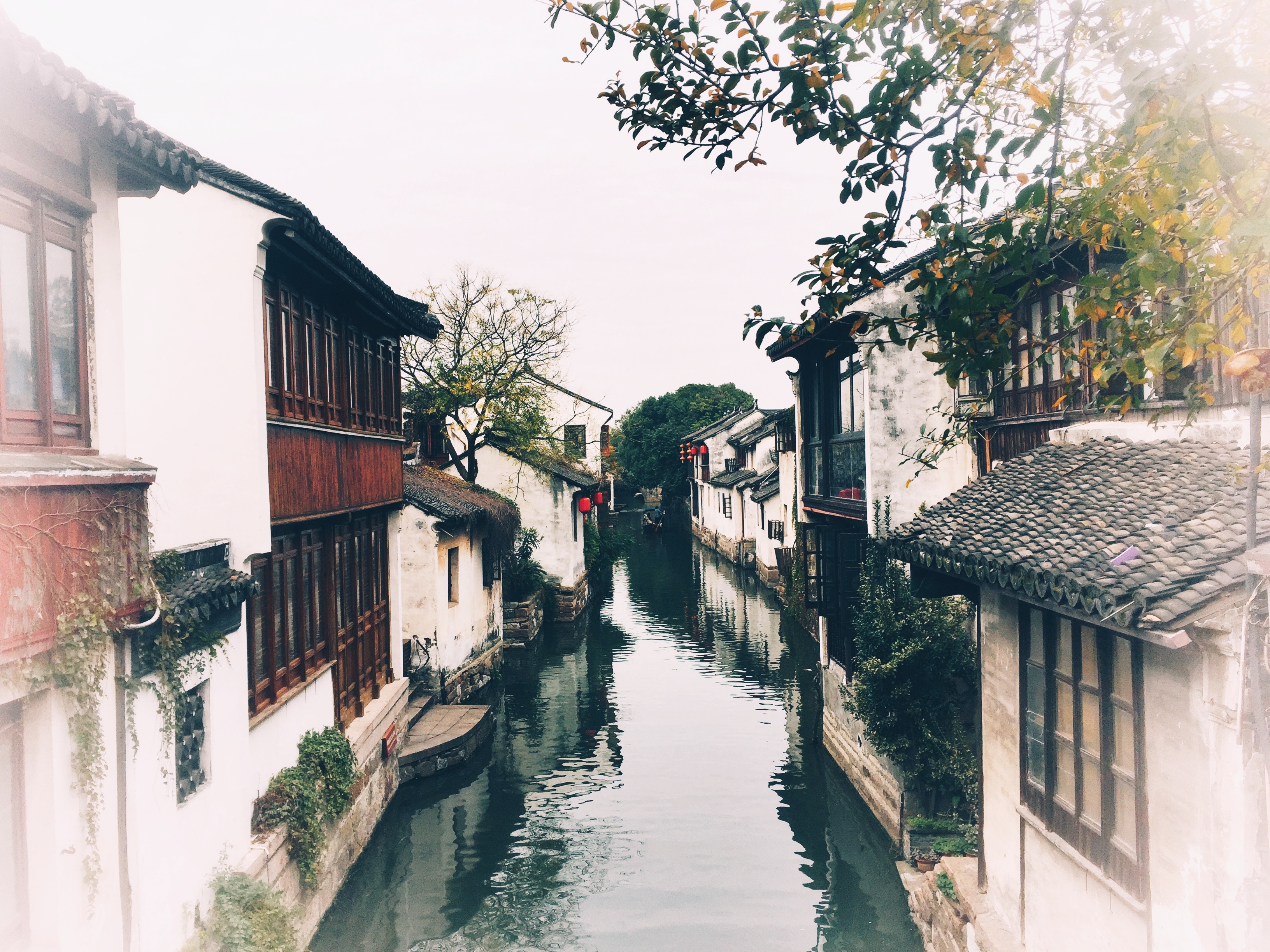
At the hotel reception, we have the address in Chinese characters on the hotel business card written. Although Shanghai is a modern city where many foreign immigrants live, English among taxi drivers is not very common. There are several ways to get to Zhouzhuang from Shanghai. One way is the special public bus line that leaves from the Long Distance Bus Station, the other is a 30-minute express train to Suzhou and a taxi to Zhouzhuang, but the most convenient is a tourist bus from the Tour Bus Center. Tickets can be ordered in advance online or purchased on the spot, buses to Zhouzhuang leave approximately every hour. The ticket price is 150 Chinese Yuan (20 Euros) and includes a return trip and an admission to the village. The entry to the protected center is not for free. The normal price is 100 Yuan – basic admission + 40 Yuan for sightseeing canal cruises. You have about five hours for exploring the village (depends on traffic), then the same bus will pick you up back to Shanghai… Our adventurous journey to Venice of the East can begin!

Why adventurous? Because in China one can easily get lost. No one speaks English, especially taxi drivers don’t, most of the signs are in Chinese letters only, half of ATMs and card readers do not accept some of foreign cards, wifi is inaccessible, and if you happen to connect somewhere, the internet is for most applications we use blocked, and Uber doesn’t even exist here. Without cash, internet and language, you can get lost very easily. Therefore, I recommend to plan such trips in advance, download offline maps, have all important addresses written in Chinese characters on paper, and carry some local cash. Credit cards won’t help you very much here. In China, there is a popular application similar to “our” Whatsapp. In addition to communication, it is also used to scan codes and the Chinese use it as an electronic wallet. Highly developed hi-tech system – no one needs to carry anything besides the phone. But this is not true for us non-Chinese. So, good luck on the go…
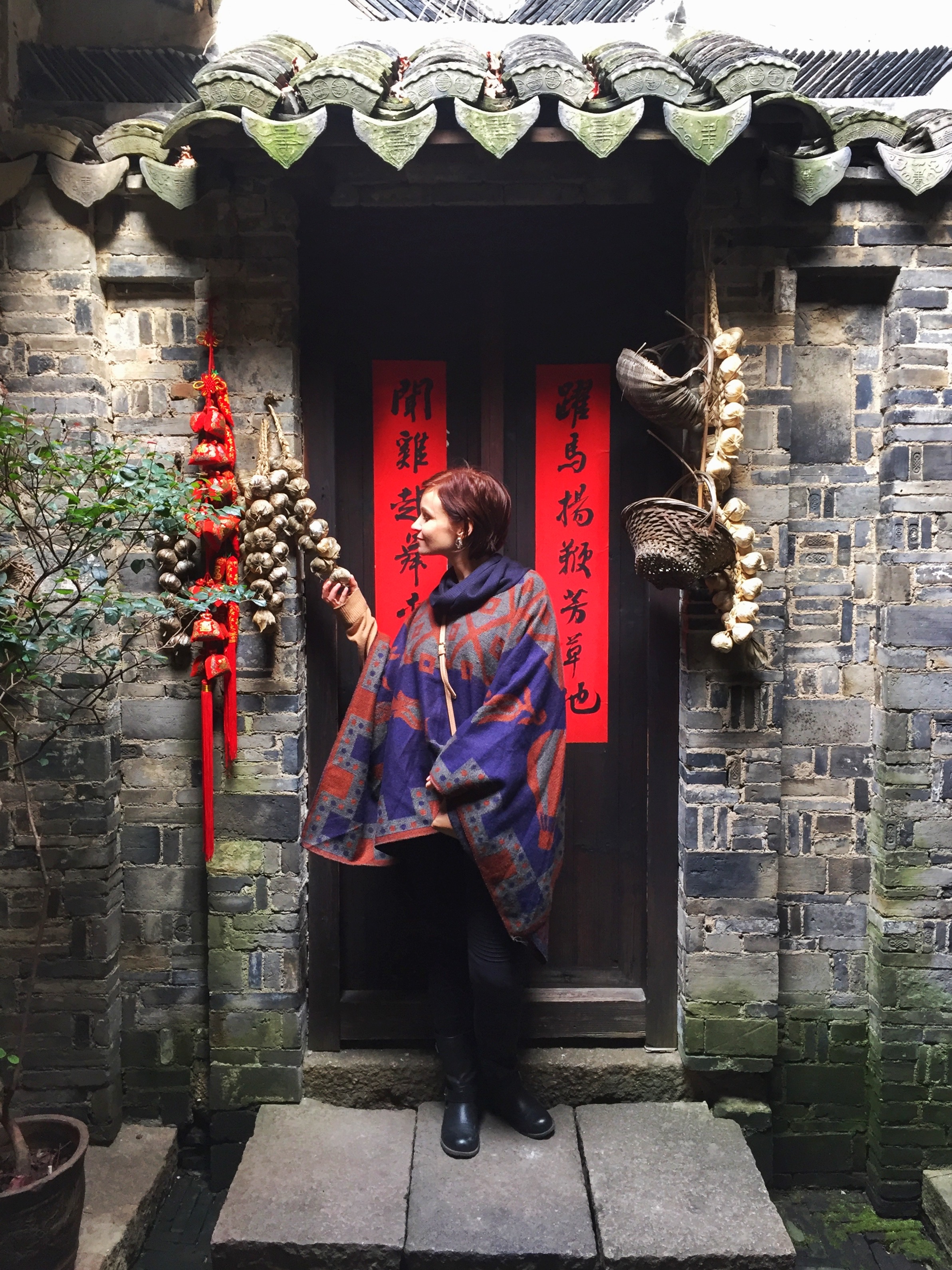
Buying a ticket at the station goes without any issue. Miss behind the window speaks English and their machine accepts our credit cards. We rather save our cash for cases of greater need. The bus is full of Chinese tourists, except one elderly blonde in front, the two of us are the only Western people. Zhouzhuang is a very popular destination among Chinese and Mongolians, summer and weekend days in the streets are said to be crowded. Although it is the weekend, we rely on the cold month of November, hoping it will keep many tourists away from the visit. Our driver and guide in one speaks only Chinese. When he speaks to a microphone, his speech sounds more like a revolutionary speech of a leader in a national rebellion than a speech of a tourist guide. This is probably due to the strong accent of Mandarin. When the Chinese talk to each other, it always sounds like they are screaming at each other. After about an hour and a half of drive (we also had a short pee-pee break), the driver park the bus at the main car park in Zhouzhuang. Again, the revolutionary speech in Chinese, and then one short sentence to the three Westerners: “THREE – HERE! THREE – HERE!” One his hand is showing three fingers, other one is pointing to the bus stop. We understand that we need to be back at three o’clock at the same place. Whether we understand it correctly, we will find out later…

I’m surprised that the village is much larger than I imagined. Its ancient center is a world heritage sight, full of many narrow streets, canals and bridges and is much more picturesque than I saw in the photos. The magic of reality is perhaps best captured on the paintings of Chen Yifei. Entrance to the house where he use to paint and live is included in the price of admission to the village, as well as entry to other houses of the richest lords. Today, their magnificent villas, hiding behind the unobtrusive walls, serve as museums. Wooden boats float on the canals, and on their banks are traditional Chinese houses standing, nowadays turning into shops with traditional Chinese crafts, products and souvenirs. River pearls, which are said to be picked in these locations, are for sale, too. But it is also a place with traditional Chinese delicacies – different kinds of teas, nougat, dim-sum dumplings, dried river worms and shrimps… We only avoid the stalls with fried tofu, which smells far and wide like fried sweaty socks. But the river worms taste surprisingly quite well. Everywhere they let us taste some sample of their food and so our stomach are quite full soon. My favorite are crackers with sesame seeds and homemade nougat. I’m shocked that in some restaurants are turtles in exposed aquariums not for decoration but dinner table. We almost buy traditional embroidered slippers with dragon motives, but we don’t have enough cash or the special Chinese app. In many museums we learn how the bricks, tiles, traditional Chinese wine or ceramics were made. I have to admit that by now I didn’t know much about the Chinese culture, but it is as fascinating as other ancient cultures of the world…
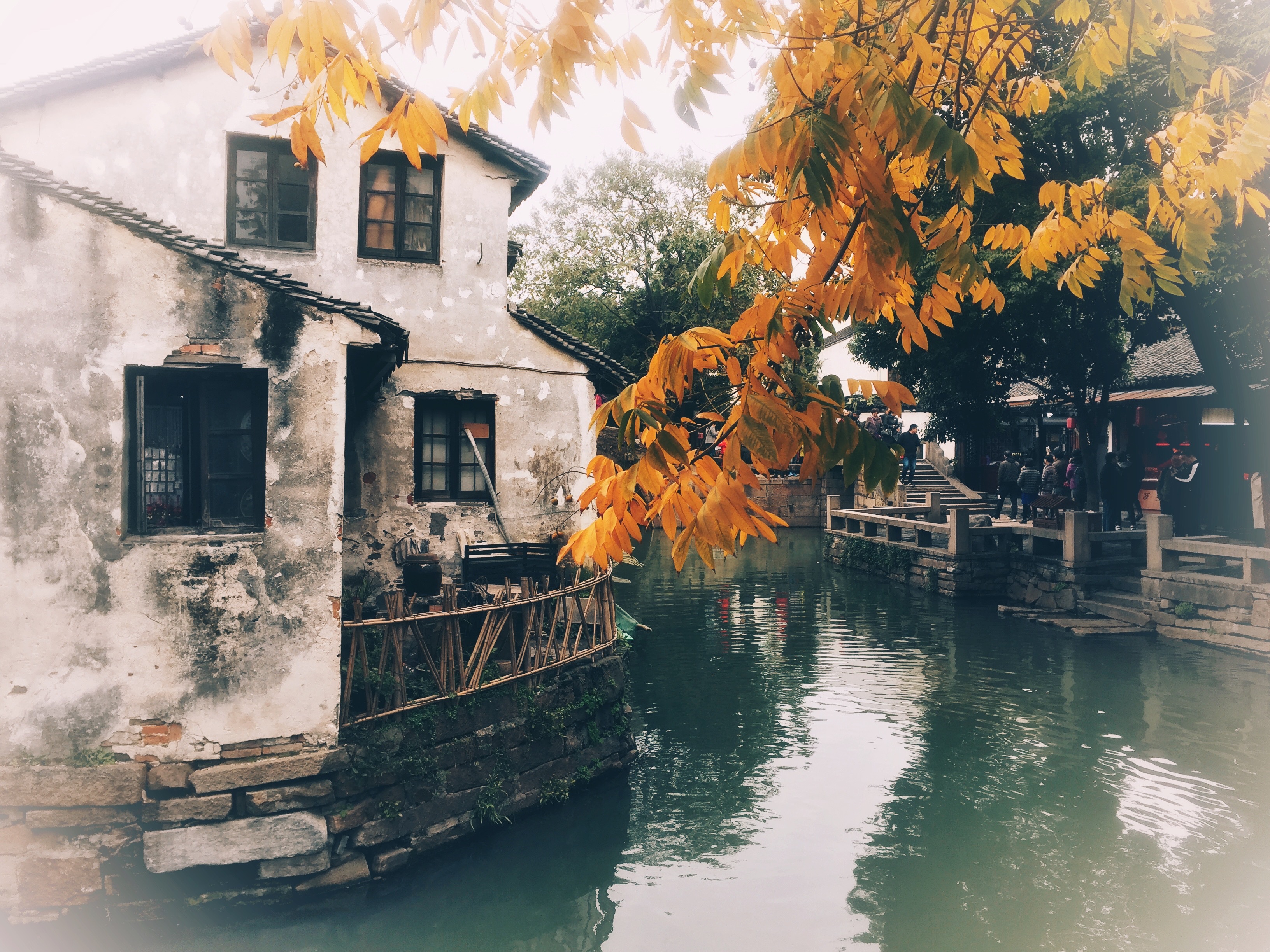
About five hours later, exactly at 3 pm we are waiting at the bus stop for our bus. Luckily, it comes, picks us up and safely takes us back to Shanghai. Due to traffic jam before entering the city, the way back takes twice as much as going to Zhouzhuang. Then we loose some time in taxi taking us from the station to the hotel. We show to driver a business card of the hotel where the address is written in Mandarin and he seems to understand. However, after about 30 minutes of drive, I see a lighted roof of our hotel disappearing behind other buildings a few blocks to the left. We begin to shout at the taxi driver behind the separating barrier, furiously pointing to our hotel and asking him to turn the car. Luckily, he understands and turns to the right road, even stopping a taximeter till we reach the right address… China is full of surprises…
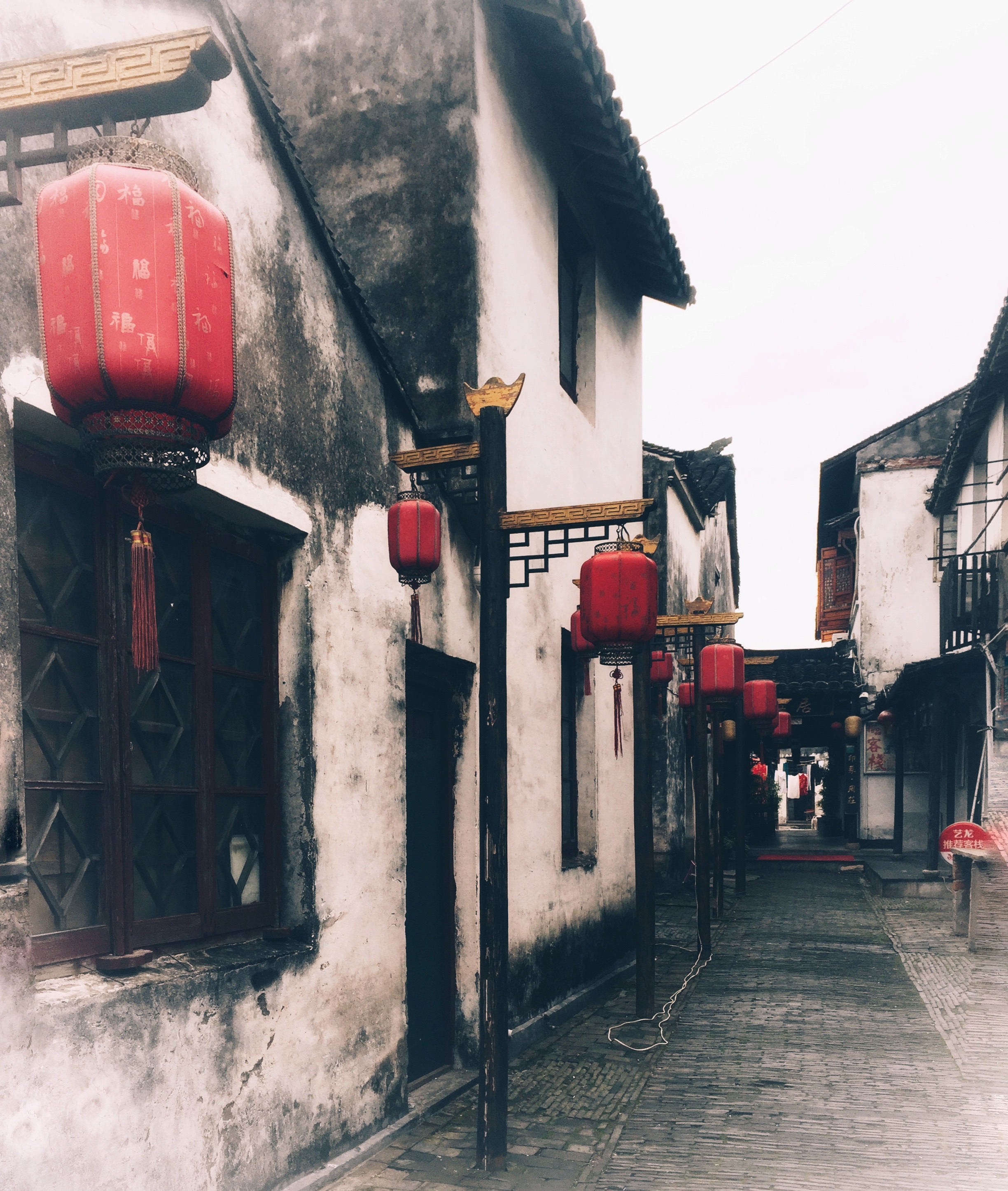
PS: If you have some extra time, be sure to visit the Natural History Museum in Jing’an Park in Shanghai – one of the world’s largest of its kind, full of dinosaurs (some even move and make sounds), skeletons, and stuffed animals. You will learn a lot about the origin of our planet and its inhabitants. The most fantastic museum I’ve ever seen! The Washington national can’t beat this one!
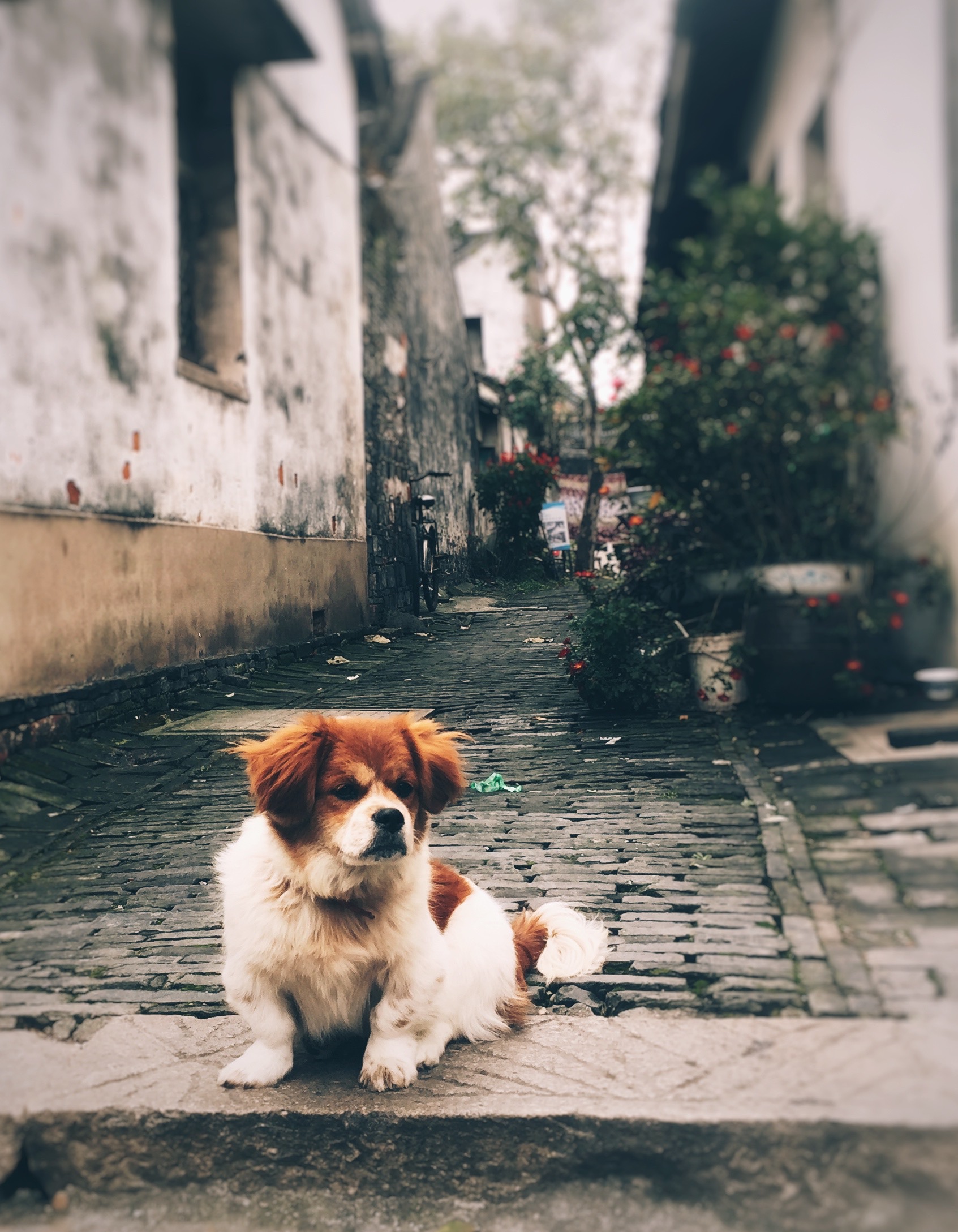

Zuzka Greizinger
STEWARDESS
FOLLOW ME

